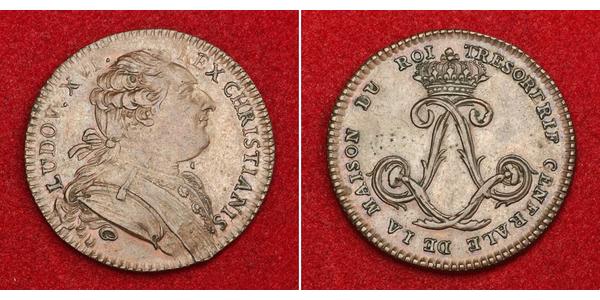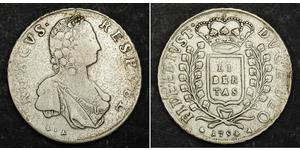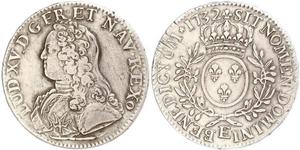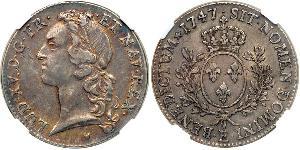(sold for $60.0)
1786, Royal France, Louis XVI. Copper "Central Royal Treasury Department" Medal.
Denomination: Medal - Central Royal Treasury Department Condition: Minor scratches in obverse and light deposits, otherwise XF! Mint Years: ca. 1786 (the date of this issue is assumed by a pattern ecu coin, which was struck with a very similar reverse design!) Diameter: 29mm Material: Bronze Weight: 8.17gm
Obverse: Draped bust of Louis XVI left, designer`s signature (I.P.DROZ.F.) below. All within rope-like border. Legend: LUDOV. XVI . CHRISTIANISS . Reverse: Crowned cipher (floral double L). Legend: CENTRALE DE LA MAISON DU ROI TRESORERIE
Possibly used at royal gambling events as proposed by Michel Prieur in his "Jetons X." catalogue for a similar piece. The reverse reminds also strongly on the milled pattern ecu, designed by the same medallist (J.P.Droz) during 1786, which has never made it into mass production. An attractive token and a great addition!
Louis XVI or Louis-Auguste de France (Versailles 23 August 1754 – 21 January 1793 in Paris) ruled as King of France and Navarre from 1774 until 1791, and then as King of the French from 1791 to 1792. Suspended and arrested during the 10th of August 1792 Insurrection, he was tried by the National Convention, found guilty of treason, and executed by guillotine on 21 January 1793. He was the only king of France to be executed.
Although Louis was beloved at first, his indecisiveness and conservatism led some elements of the people of France to eventually hate him as a symbol of the perceived tyranny of the Ancien Régime.[citation needed] After the abolition of the monarchy in 1792, the new republican government gave him the surname Capet, a reference to the nickname of Hugh Capet, founder of the Capetian dynasty, which the revolutionaries wrongly interpreted as a family name. He was also informally nicknamed Louis le Dernier (Louis the Last), a derisive use of the traditional nicknaming of French kings. Today, historians and Frenchmen in general have a more nuanced view of Louis XVI, who is seen as an honest man with good intentions, but who was probably unfit for the herculean task of reforming the monarchy, and who was used as a scapegoat by the revolutionaries.

|
Posted by:
anonymous 2018-01-21 |
2 Liard Austrian Netherlands (1713-1795) Copper
group has 3 coins / 3 prices
⇑
















-300-150-zTgKbzbixN4AAAFSpQBzJO3T.jpg)






